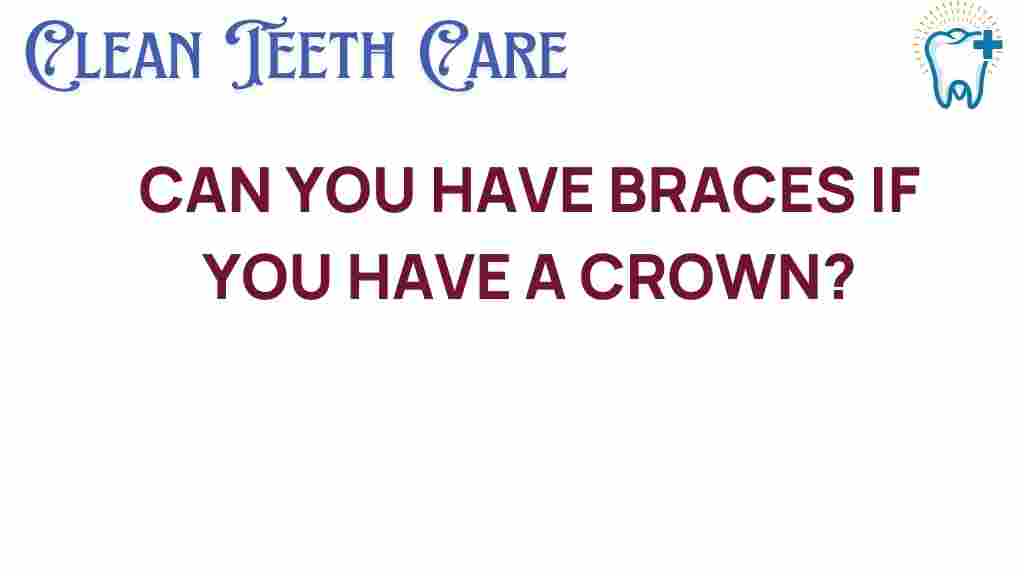Braces and Crowns: Can You Have Both?
When it comes to maintaining oral health, many individuals find themselves navigating the complex world of orthodontics. If you’re considering braces to improve teeth alignment but also need dental crowns for tooth restoration, you may be wondering: can you have both? This article will explore the relationship between braces and dental crowns, how they can coexist, and what you need to know about your dental care.
Understanding Braces and Dental Crowns
Before diving into whether you can have braces and dental crowns simultaneously, it’s essential to understand what each treatment entails.
- Braces: Braces are orthodontic devices used to correct misaligned teeth and jaws. They apply continuous pressure to gradually shift teeth into their proper positions. This process can significantly enhance your smile and overall oral health.
- Dental Crowns: Dental crowns are caps placed over a damaged tooth to restore its shape, size, strength, and appearance. Crowns are typically used when a tooth is severely decayed, fractured, or has undergone root canal treatment.
Can You Have Both Braces and Dental Crowns?
The short answer is yes; you can have both braces and dental crowns. However, whether you should have them simultaneously depends on several factors. Here’s a closer look:
1. Timing of Treatment
In many cases, orthodontists recommend getting braces first to align the teeth properly. Once the desired alignment is achieved, dental crowns can be placed on teeth that need restoration. This approach ensures that the crowns are positioned correctly and that the overall bite is optimized.
2. Condition of Your Teeth
If a tooth requires a crown due to decay or damage before you start orthodontic treatment, your dentist may suggest placing the crown before beginning braces. Your specific dental condition will guide this decision.
3. Type of Braces
Different types of braces may affect how crowns can be integrated into your treatment plan. For example:
- Traditional Metal Braces: These can be used along with crowns, but care must be taken to avoid damaging the crowns during the treatment.
- Clear Aligners: If you opt for clear aligners instead of traditional braces, you may have more flexibility regarding existing crowns, as aligners are removable.
Step-by-Step Process: Combining Braces and Crowns
If you’re considering undergoing both treatments, here’s a general step-by-step process:
- Initial Consultation: Schedule a consultation with your orthodontist and dentist. Discuss your needs and goals regarding teeth alignment and tooth restoration.
- Dental Assessment: Your dentist will perform a thorough examination of your teeth to determine if any require crowns before starting orthodontic treatment.
- Treatment Plan Development: Your orthodontist will create a customized treatment plan that includes the timing for braces and any necessary crowns.
- Placement of Crowns (if needed): If you need crowns, they may be placed before or after braces, depending on your unique situation.
- Braces Application: Once your dental crowns are in place and healing properly, your orthodontist will apply the braces.
- Ongoing Care: Regular check-ups will be essential to monitor the progress of both orthodontic treatment and the condition of crowns.
Maintaining Oral Health with Braces and Crowns
Maintaining oral health during treatment with braces and crowns is crucial. Here are some tips:
- Regular Dental Visits: Schedule regular check-ups with both your orthodontist and dentist to monitor your progress.
- Good Oral Hygiene: Brush twice daily and floss regularly. Use an interdental brush to clean around braces and crowns effectively.
- Avoid Certain Foods: Be mindful of hard, sticky, or chewy foods that can damage braces or dislodge crowns.
Troubleshooting Common Issues
While undergoing treatment with braces and crowns, you may encounter some common issues. Here are troubleshooting tips:
- Sensitivity: It’s common to experience sensitivity in teeth with crowns when braces are first applied. Use a toothpaste designed for sensitive teeth to alleviate discomfort.
- Loose Crown: If a crown becomes loose, contact your dentist immediately to avoid further damage to the tooth.
- Discomfort from Braces: If your braces cause discomfort, over-the-counter pain relief can help. Consult your orthodontist if the pain persists.
Conclusion
In conclusion, you can have both braces and dental crowns, but the timing and approach will depend on your specific dental needs. Consulting with both an orthodontist and a dentist is critical to developing a treatment plan that ensures optimal oral health and teeth alignment. Proper care during this journey will lead to a healthier smile.
For more information on maintaining oral health and the benefits of orthodontics, consider visiting this resource.
Ready to improve your smile? Schedule your consultation today and take the first step toward achieving the smile you’ve always wanted!
This article is in the category Treatments and created by CleanTeethCare Team
